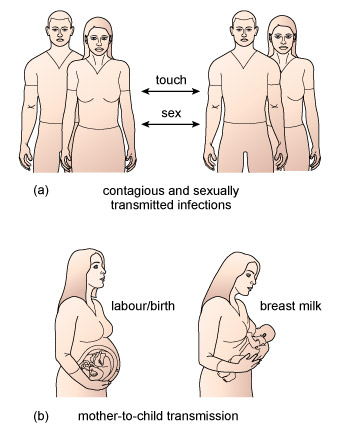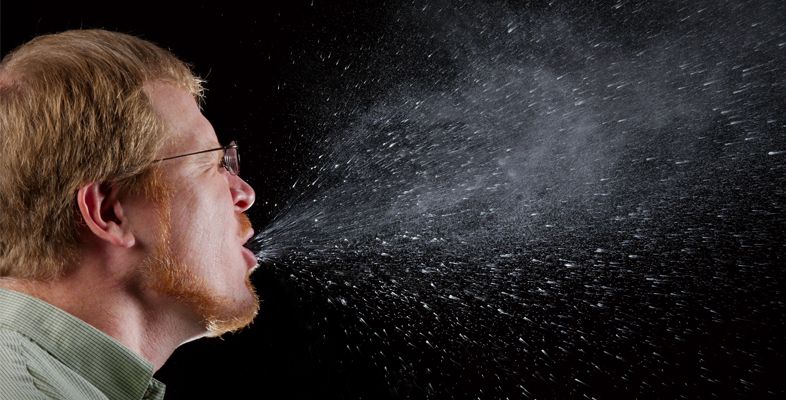1.5 Direct person-to-person transmission of pathogens
A new infection begins when pathogens leave the body of their host – the infected individual in which the pathogens are multiplying – and enter a new host. They may be repelled by defence mechanisms in the new host as discussed in Secion 4 ‘Immune defences against infectious diseases’, or they may survive and reproduce in sufficient numbers to cause an infectious disease.
Transmission of pathogens can occur directly between people, or indirectly in the air, water or food, or via other animals to humans, or from sources in the environment. In this section we explore direct transmission.
Figure 5 represents the three ways in which pathogens can be transmitted by direct person-to-person contact.

They are:
- Contagious infection, when touch, such as a handshake, transfers pathogens to a susceptible person; they may enter the new host through a cut or graze, or be transferred from hand to mouth.
- Sexually transmitted infection (or STI) involving infected semen, vaginal secretions, saliva or blood transmitting pathogens to the infected individual’s partner during unprotected sex. This is the most common route for the worldwide spread of HIV (the human immunodeficiency virus), which causes AIDS (acquired immune deficiency syndrome). Sexual transmission is more likely if the partner’s genitals, mouth or rectum are inflamed, for example, by another STI such as gonorrhoea [gonn-or-ree-ah] or syphilis [siff-ill-iss].
- Mother-to-child transmission, when pathogens pass from mother to baby during labour and delivery, or via breast milk.
